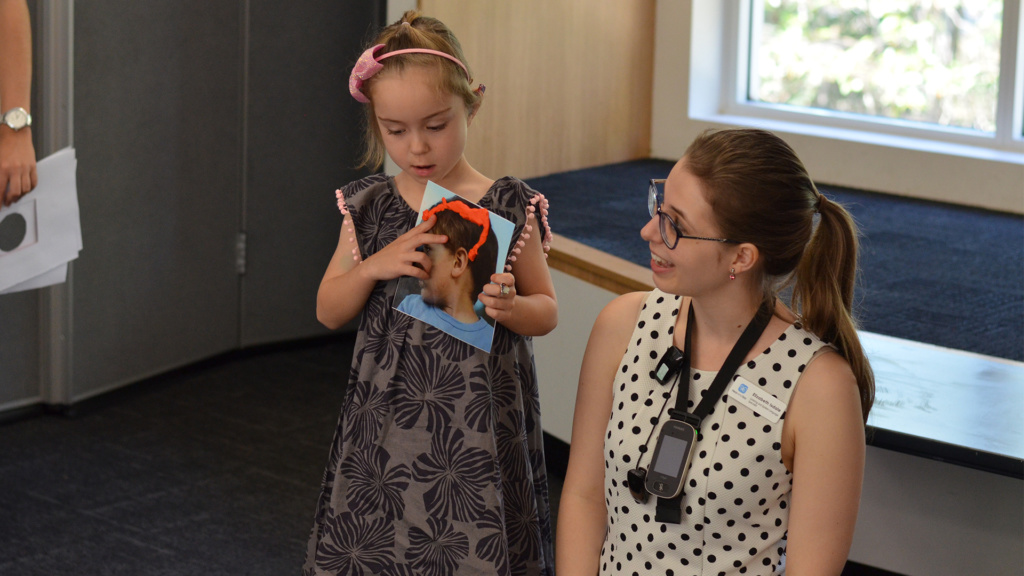Tongue Thrust Affect on Speech
What is a Tongue Thrust?
Tongue thrust is a condition where the tongue pushes forward against the back of the teeth or between the top and bottom front teeth during breathing, swallowing, and speaking. Often times, the tongue will push forward but sometimes it can also press into the back of the teeth. A tongue thrust can also be known as a "reverse swallow" or "immature swallow".

When Should I be Concerned About a Tongue Thrust?
The tongue thrust is an important protective reflex seen in young babies that allows them to push food out of their mouth to prevent choking when breastfeeding or bottle feeding. For most children, this reflex typically matures at around six months and develops into a more effective swallowing pattern for eating solid foods.
For some children, the transition from tongue thrusting to a more mature swallow does not occur seamlessly, which can lead to the persistence of a tongue thrust swallow pattern well into older childhood and even adulthood. Targeted intervention from a health professional would be required to correct a tongue thrust.
What Causes a Tongue Thrust?
There is no single underlying cause, but rather there are a range of factors in a child's development that may be contributing to persistent tongue thrusting. Some possible reasons include, but are not limited to:
Prolonged thumb sucking or dummy use beyond 12 months of age (this can narrow the shape of the mouth and cause the tongue to push forward)
A tongue tie (where the band of skin beneath the tongue is shorter than usual) can restrict the tongue's movements, so children tend to use a forward tongue position
Mouth breathing often stemming from nasal congestion, chronic allergies, tonsillitis or enlarged adenoids also encourages the tongue to rest in a forward position
Certain conditions such as cerebral palsy and Down syndrome have an increased likelihood of a tongue forward resting position
Genetic factors such as the angle of the jaw line
What are the Common Signs and Symptoms of a Tongue Thrust?
One of the most common indicators of a tongue thrust is seeing the child's tongue tip poking through their front teeth when resting, speaking and eating. This can also result in messy, fast and slow eating habits.
Another indicator of a tongue thrust is an open bite, where the front teeth don't meet, and the mouth remains slightly open even at rest. Some children may also find it difficult to close their lips completely. In some children, this can be particularly noticeable during periods of concentration, relaxation or sleep.
An overbite, also known as protruding upper front teeth, are another common sign of a tongue thrust caused by the constant pressure of the tongue pushing against the front teeth. A dentist or orthodontist will often notice these signs of malformed teeth in young children and attribute them to tongue thrusting.
How Does a Tongue Thrust Impact Swallowing?
Clear speech is created through the precise coordinated movements of the articulators – lips, tongue, teeth, and roof of mouth. The forward movement of a tongue thrust interferes with the correct tongue placements required for certain speech sounds.
The most common presentation that children with a tongue thrust will present with is an interdental lisp, where the ‘s’ and ‘z’ sounds become distorted. Most people will usually touch the tongue to the roof of the mouth to create the ‘s’ and ‘z’ sounds, but a child with a tongue thrust will stick their tongue out between their front teeth which distorts their ‘s’ and ‘z’ sound, to create a ‘th’ sound instead. A lisp is a concerning speech problem that not only impacts speech clarity but also a child’s self-esteem and confidence when talking to others.

What are the Long-Term Effects of a Tongue Thrust if Left Untreated?
Looking ahead, the significant problems of an untreated tongue thrust extend far beyond childhood. The constant pressure of the tongue thrusting against or between the teeth when swallowing could result in misaligned teeth such as an overbite, underbite, protruding front teeth or an open bite (where the top and bottom teeth don't meet). Improper alignment of the teeth can further increase difficulties with biting and chewing food.
Other anatomical changes associated with a persistent tongue thrust include an elongated facial structure, changes in the development of the roof of the mouth and a narrowed upper jaw. As permanent teeth settle into their positions, this can require extensive orthodontic treatment to correct.
Difficulties with the production of specific speech sounds or lisping may also become ingrained. This may present a challenge to correct later on as speech muscular patterns are increasingly difficult to address with speech therapy as a child ages.

How is a Tongue Thrust Diagnosed?
Tongue thrusting can be corrected through specific evidence-based speech therapy strategies, to improve tongue muscle strength, coordination and range of movement beyond a forward position.
Depending on the presentation of the child, they may also receive speech therapy to correct their production of specific sounds that have been affected by the tongue thrust.
Creative play-based methods are often employed to make the treatment enjoyable and motivating for children. For successful treatment, speech therapy activities should be integrated into daily routines, to ensure the child has multiple opportunities to practice consistency to break their tongue thrust habit.
In more severe tongue thrusting cases, orthodontic appliances may be required to act as physical guides to retrain the tongue’s resting position in the mouth. This may also be done to correct any teeth or jaw misalignment.
If the tongue thrust was caused by an underlying condition, allergies, nasal or breathing issues, it may be recommended by health professionals to treat or resolve them first to improve the chances of successful therapy.
When Should I Speak with a Speech Pathologist?
If you notice any concerns regarding your child’s tongue placement during speech, at rest, or feeding, it may be time to consult a professional. Speech pathologists are responsible for the identification and treatment of tongue thrust concerns relating to speech and feeding.
If tongue thrust is identified, early intervention can prevent the condition from causing long-term speech, swallowing, and dental issues. It’s particularly crucial for older children, whose academic and social development could be impacted by speech difficulties.
Speech Pathologists can work with you and your child to develop a treatment plan that combines the necessary goals and therapy exercises to help correct the tongue's placement and movement.
How Else can I Help my Child With a Tongue Thrust?
A parent's role in identifying and correcting a tongue thrust is critical. There are many things you can do to help your child in their tongue thrusting journey such as:
- Consider transitioning your child away from prolonged habits such as dummy sucking or thumb sucking
- Encourage your child to eat a range of food textures to promote tongue strength and range of tongue movement in the mouth
- Incorporate activities from your speech pathology therapy sessions into your child's daily routine to support learning of correct tongue placement and tongue movement
- Don't make a big deal about the child's tongue thrust in front of them as it may impact their confidence when eating or swallowing. Instead, praise when you see them move their tongue in the correct positions for speech and swallowing
- Keep a record of your child's individual tongue thrusting signs and symptoms to track their progress
- Most importantly, tongue thrust is much easier to correct if caught early so seek advice as soon as you can from a health professional









